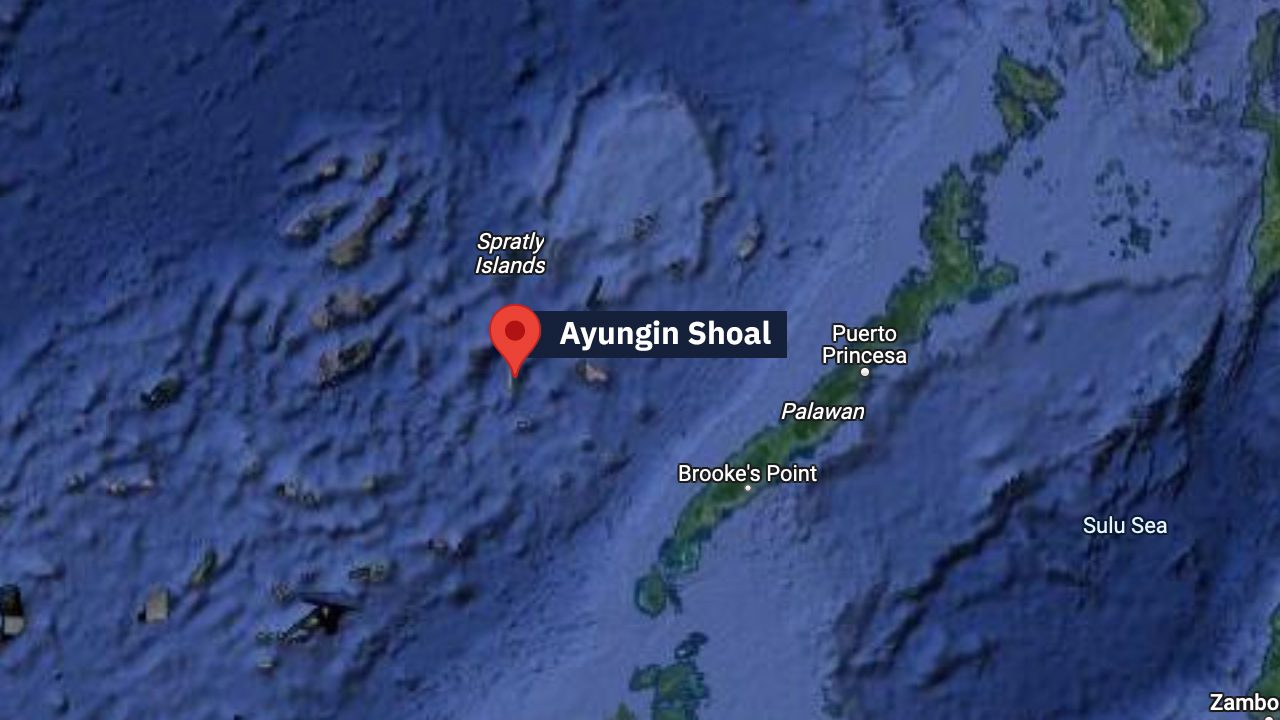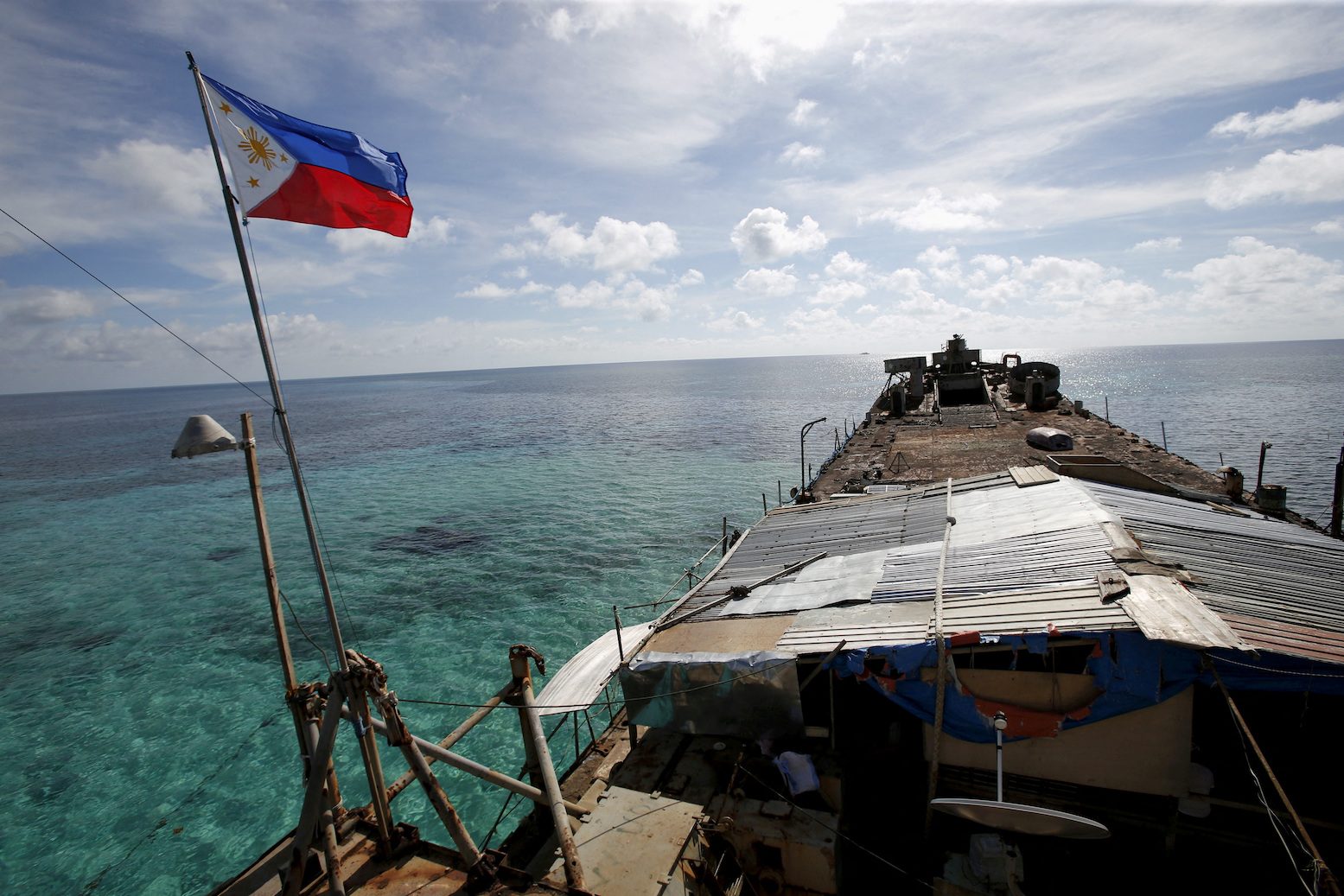From Rappler (Jun 17, 2024): View from Manila: PH, US, Japan, and Canada sail WPS as China’s ‘scare tactics’ kick in (By BEA CUPIN)
 (2nd UPDATE) The Philippine government does not immediately respond to China's claim of a collision near Ayungin Shoal
(2nd UPDATE) The Philippine government does not immediately respond to China's claim of a collision near Ayungin Shoal
MANILA, Philippines – The weekend passed without tension in the West Philippine Sea (WPS), as China’s much talked-about coast guard “regulation” against trespassers in Chinese waters kicked in on Saturday, June 15.
The Philippines is unhappy with China’s directive to its coast guard. The National Security Council spokesperson branded it as China’s “scare tactics;” Defense Secretary Gilberto Teodoro said it was a “provocation” of “international concern” and a “breach of international peace;” and President Ferdinand Marcos Jr. said it was an “escalation” that was “worrisome.”
But there was little news as Saturday and Sunday rolled by.
Queries from Philippine media went unanswered and no reports of incidents surfaced – until early Monday, June 17, when the China Coast Guard claimed that a collision took place in waters close to Ayungin Shoal, where the BRP Sierra Madre has stood watch since 1999.
Other Stories
China Coast Guard: Philippine supply ship bumped Chinese ship at Ayungin Shoal
China Coast Guard says the vessel deliberately and dangerously approached the Chinese ship in an unprofessional manner, resulting in a collision
G7 leaders express serious concern over situation in East and South China Seas
'We continue opposing China’s dangerous use of coast guard and maritime militia in the South China Sea and its repeated obstruction of countries’ high seas freedom of navigation,' G7 leaders say
Rappler Talk: The Balangay returns to the West Philippine Sea
Catch the interview with expedition leader Art Valez and members Jody Navarra and Ted Esguerra on June 12What did the Philippines have to say about that? With radio silence for more than 12 hours.
Philippine Coast Guard (PCG) spokesperson for the West Philippine Sea Commodore Jay Tarriela, among the Philippines’ talking heads in all things related to the WPS, said they were “not in a position to provide any details on this issue” since the PCG was not involved. He would later clarify that the PCG only provided support, upon the military’s request.
The AFP’s first (and only) statement by late afternoon had been that it would not “discuss operational details on the legal humanitarian rotation and resupply mission at Ayungin Shoal.” It added: “We will not dignify the deceptive and misleading claims of the China Coast Guard. The main issue remains to be the illegal presence and actions of Chinese vessels within the Philippines’ exclusive economic zone, which infringes on our sovereignty and sovereign rights. The continued aggressive actions of the CCG are escalating tensions in the region.”
Finally on Monday evening, the National Security Council issued a statement accusing China of “ramming and towing” Philippine vessels on a resupply mission to BRP Sierra Madre off Ayungin.

The delayed response is a strange turnaround from previous months, when the PCG would be quick to send to media videos and photos of any incidents in the West Philippine Sea – much to the chagrin of the embedded media, who did not have access to internet out at sea.
The AFP, at one point, even went a step further – sending, through official media group chats, near real-time videos and photos of a resupply mission to Ayungin Shoal.
In early June, the AFP and PCG released two-week old videos of how the Chinese harassed an aerial resupply mission to Ayungin Shoal and a medical evacuation from the shoal. Even then, those releases were preceded by Chinese media claiming that Filipino soldiers pointed their guns at the Chinese.
So what happened to Manila’s transparency initiative this time?
Allies cross the WPS
China Coast Guard claims aside, it seems that there was still a flurry of activities in the Philippines’ exclusive economic zone (EEZ) in the South China Sea over the weekend.
From June 16 to 17, Philippine, US, Japanese, and Canadian vessels sailed the Philippine EEZ, which Manila calls the West Philippine Sea. It’s the first time for the Royal Canadian Navy to join a multilateral sail in the West Philippine Sea.
The four vessels – the Philippine Navy’s BRP Andres Bonifacio, the US Navy’s USS Ralph Johnson, the Royal Canadian Navy’s HMCS Montreal, and the Japan Maritime Self-Defense Force’s JS Kirisame – held “activities and maritime maneuvers to test and validate the interoperability of our armed forces’ doctrines, tactics, techniques, and procedures,” according to the United States.

The Japan Maritime Self Defense Force, Philippine Navy, US Navy, and Royal Canadian Navy sail the West Philippine Sea together during a Multilateral Maritime Cooperative Activity (MCA) from June 16 to 17, 2024.
The Japan Maritime Self Defense Force, Philippine Navy, US Navy, and Royal Canadian Navy sail the West Philippine Sea together during a Multilateral Maritime Cooperative Activity (MCA) from June 16 to 17, 2024.
The Japan Maritime Self Defense Force, Philippine Navy, US Navy, and Royal Canadian Navy sail the West Philippine Sea together during a Multilateral Maritime Cooperative Activity (MCA) from June 16 to 17, 2024.
The Japan Maritime Self Defense Force, Philippine Navy, US Navy, and Royal Canadian Navy sail the West Philippine Sea together during a Multilateral Maritime Cooperative Activity (MCA) from June 16 to 17, 2024.

The Japan Maritime Self Defense Force, Philippine Navy, US Navy, and Royal Canadian Navy sail the West Philippine Sea together during a Multilateral Maritime Cooperative Activity (MCA) from June 16 to 17, 2024.
Japan and Canada are at different stages of negotiations with the Philippines to conclude visiting forces-like treaties, or the terms to which their soldiers would adhere when stepping on Philippine soil (and vice versa). The Reciprocal Access Agreement (RAA) with Japan is in the final stages of negotiation.
Canada, fresh off the signing of an agreement on defense, is also eyeing a Visiting Forces Agreement with the Philippines.
What would these agreements do? They would make participation in existing joint exercises, such as the US and Philippines’ Balikatan, easier. They would also pave the way for new bilateral exercises between, say, the Philippines and Japan, or the Philippines and Canada. – Rappler.com
https://www.rappler.com/philippines/view-manila-united-states-japan-canada-sail-west-sea-china-coast-guard-regulation/























